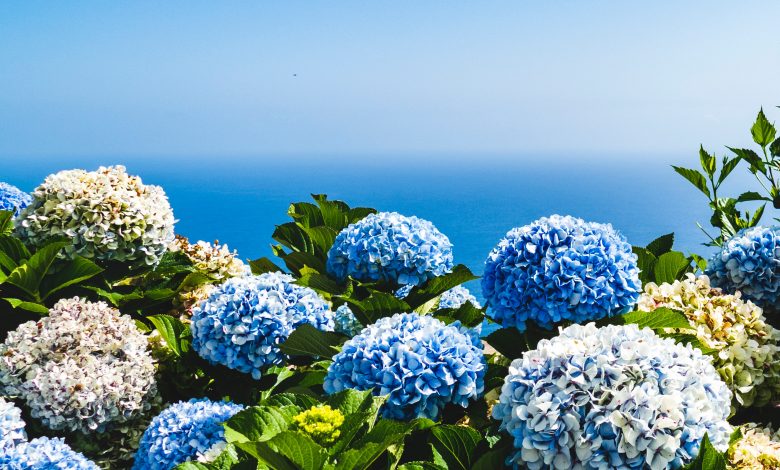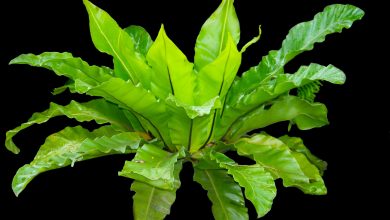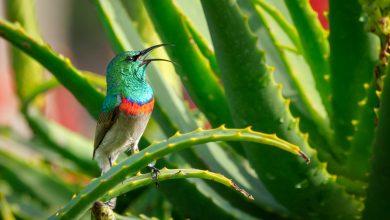Types of Hydrangeas and How to Grow Them

The hydrangea plant is one of the most popular flowering specimens to lighten up a landscape. Hydrangeas come in all sizes and colors, but each features a similar pattern of tiny flower petals that come together to create lush globes of foliage. While many hydrangeas are white, others can feature red, blue, pink, and purple petals that liven up any landscape. Below, we will go over how to care for hydrangeas, what types there are, and some popular varieties that you should consider growing in your garden.
How to Care for Hydrangeas
For as showy as hydrangeas can be, you might think they require special attention. However, that could not be further from the truth. Hydrangeas are perfect plants for beginners, as they practically grow themselves.
For some varieties, the flowers may overpower younger stems, which requires additional care to get the plant growing upright. But that is about it as far as general maintenance goes. Plant them in the right place and watch them blossom. Below are the ideal conditions for hydrangeas to grow.
Sunlight
Getting enough sunlight is the primary consideration when planning where to plant your hydrangeas. While they will survive in the shade, sunlight is necessary to bring out their fantastic blooms. Ideally, hydrangeas will be basking in the sun for six hours per day, beginning in the morning, with some afternoon shade.
The farther north your garden is, the more your hydrangeas will yearn for the sun. Even in just partial shade, it may take longer for flowers to bloom. While hydrangeas need sunlight to flower, direct, hot afternoon sun can stunt their growth.
Water
When your plants are young and growing, try to water them deeply three times per week. The deep watering will encourage the roots to extend further into the ground and establish their place in your garden. Once your hydrangea is full and happy, you can water at a rate of one inch per week during the growing season.
Two types of hydrangeas that require more watering are smooth and bigleaf hydrangeas. But all varieties appreciate consistently moist soil. Try to keep water off the flowers and leaves, if possible.
Soil
Most hydrangeas thrive when planted in well-draining, fertile soil. Hydrangeas appreciate consistently moist soil but will not be happy if they’re waterlogged. If your soil is dense and heavy, mix in plenty of compost mix before planting.
Soil is also a significant factor in the color of your hydrangea’s flowers.
How to Change the Color of Hydrangea Flowers
Not every hydrangea can change color. But the ones that can change color do so based on the pH of the soil they are growing in. The flowers of bigleaf hydrangeas are especially adept at changing color based on how acidic or alkaline the soil is. Examples of bigleaf hydrangeas that perform well at changing colors are mophead and lacecap varieties.
Acidic soils under 5.5 pH are best for growing blue flowers, while soil with a pH greater than 5.5 is best for producing pink flowers. You can change blue flowers to pink and pink flowers to blue, but white flowers will always stay white.
The color change will not happen immediately, but it can happen before the season is over. Color-correction can take a few weeks or a few months before it becomes noticeable. It is also easier to turn a blue flower to pink than a pink flower to blue. Wait until a plant is at least two years old before attempting to move it to new soil.

Fertilizer
The type of hydrangea you have will determine what fertilizer to use and when to use it.
- Smooth hydrangeas only need to be fertilized once in late winter.
- Bigleaf hydrangeas appreciate light fertilization in March, May, and June.
- Panicle and oakleaf hydrangeas should be fertilized once in April and then once again in June.
Temperature
Hydrangeas can handle warmer temperatures but can become overheated with intense direct sunlight.
Toxicity
Unfortunately, hydrangeas are poisonous to both cats and dogs. But while the whole plant is toxic, in most cases, ingestion will not be fatal. The reason for the toxicity is that the entire plant contains cyanogenic glycoside. If ingested, this toxin will cause stomach issues that can lead to vomiting and diarrhea. Other symptoms can include depression, loss of appetite, fatigue, heightened heart rate, and heightened body temperature.
Pests
Hydrangeas are relatively pest-free, so this is one less thing you will have to worry about.
Propagation
There are multiple ways to coax a hydrangea cutting into forming a root. One of those is by leaving the plant in water for an extended period, but this method fails almost as often as it succeeds. A more dependable option is to replant in a pot. Here are five simple steps to propagate a hydrangea.
- Take a cutting from a branch that did not flower this year and cut it at six inches.
- Cut the largest leaves down to about half of their original size.
- Dip the cuttings in a rooting hormone (completely optional) and place it into a pot of damp vermiculite or sand.
- Water the pot well and make sure it is draining.
- Cover the plants with plastic wrap but tent the plastic with stakes so that it is not touching the leaves.
Don’t water the plant again until the top of the soil is dry. After about two to three weeks, the roots should begin to form. You will be able to tell by tugging on the cutting. If there is resistance, then roots are forming.
Types of Hydrangeas
There are five main types of hydrangeas, with different variations of each. Below are the five main types.

Bigleaf Hydrangeas
Hydrangea macrophylla
The most common hydrangea you will come across is the bigleaf variety. These are also known as florist’s hydrangeas and French hydrangeas. There are three different types of bigleaf hydrangeas: mophead, lacecap, and mountain.
Mophead Hydrangeas
Hydrangea macrophylla
Mopheads are the most popular variety you will come across. They feature big, beautiful heads of flowers surrounded by thick, crisp leaves. The leaves will grow up to five inches wide and six inches long with serrated edges. Mopheads are lauded for their large spherical flower blooms, but those blooms can also overpower the stems of a younger plant. If you notice your mophead hydrangea falling over, get some stakes and twine to help support it.
Lacecap Hydrangeas
Hydrangea macrophylla normalis
The lacecap variety of bigleaf hydrangeas is identical to a mophead, with the exception of the blooms. On a lacecap, tiny fertile blooms of color populate the middle of the bloom, and they are surrounded by large, clover-like white petals. The smaller buds are fertile, while the showy blossoms are sterile.

Mountain Hydrangeas
Hydrangea macrophylla serrata
You won’t see many mountain hydrangeas, but that is all the more reason to consider them for your landscape. Mountain hydrangeas are as hardy as they come and can survive harsh conditions. In appearance, they are much more similar to lacecaps than mopheads.
Panicle Hydrangeas
Hydrangea paniculata
You can recognize a panicle hydrangea by the cone shape its flowers take, along with its smaller, thinner leaves. The leaves have smooth edges and appear in a warm green color with a matte finish.
Smooth Hydrangeas
Hydrangea arborescens
Also known as wild hydrangeas, the smooth variety is a larger shrub that is native to the U.S. Smooth hydrangeas can handle hot climates and are often planted as a hedge due to their large size. They feature heart-shaped leaves with long stems.
Oakleaf Hydrangeas
Hydrangea quercifolia
The oakleaf variety was, of course, named after the resemblance its leaves have to those of an oak tree. The leaves can grow from four inches by four inches up to ten inches by ten inches and will change color in the fall. Oakleaf hydrangeas are the only variety to change leaf color when the calendar turns.
Climbing Hydrangeas
Hydrangea petiolaris
The climbing variety of hydrangea is, without a doubt, the most unique, as it effortlessly climbs up trees and other vertical surfaces. It has unsurprisingly risen in popularity recently due to its large blooms and its distinctive characteristics. Climbing hydrangeas can grow from 30 to 80 feet long.
Noteworthy Varieties of Hydrangeas
Here are two specific cultivars of hydrangeas to consider including in your garden.
Limelight Hydrangea
Hydrangea paniculate
With conical flower heads that can grow up to 12 inches long, the limelight hydrangea is a wildly popular choice to add interest and a little size to your garden. Growing from six inches by six inches up to eight inches by eight inches, limelight hydrangeas are especially noteworthy for their long-lasting blooms, which can delight your senses into the fall.
Little Lime Hydrangea
Hydrangea paniculate ‘Jane’
A dwarf version of the popular limelight, little lime hydrangeas grow three inches by three inches up to five feet by five feet in spherical forms. What makes them so attractive, other than their predictable shape, are their white flowers that slowly turn to pink as the summer burns away.



